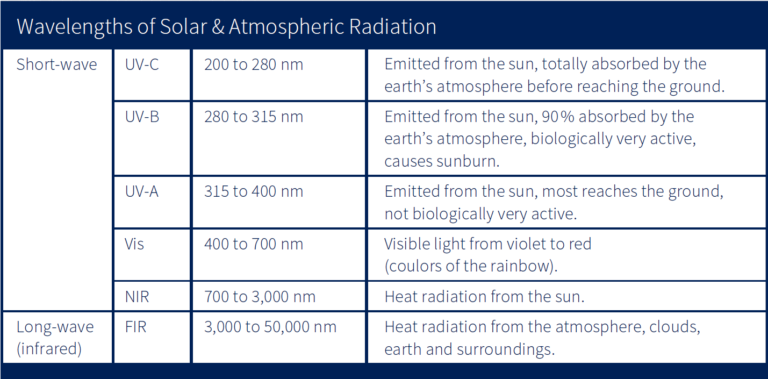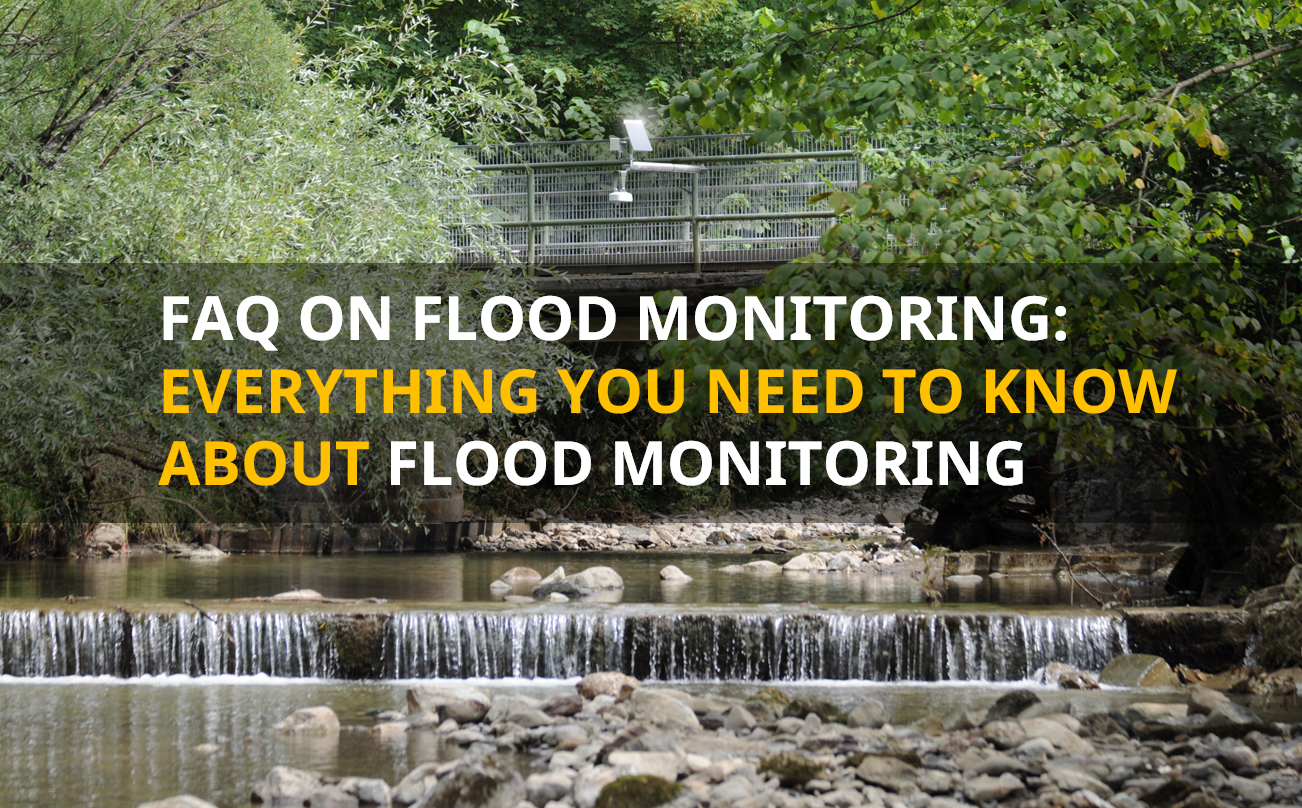The sun is the source of life on Earth, but it can do harm, too. Especially the ultraviolet spectrum of the sun’s radiation (UV) can cause severe damage to people with brighter skin types. This article gives an overview of the energy-rich end of the sunlight and technical ways to measure it.
Sunlight is electromagnetic radiation with photons spanning over a broad wavelength range. Only a minor part of the sun’s spectrum can be seen by humans, in average it is the range from 400 to 780 nm (10^-9 m). The ultraviolet (UV) part with shorter wavelengths (and more energy) reaches from 100 to 400 nm.
The UV light has several beneficial effects, as it stimulates the production of vitamin D for example, but it may also be very harmful if UV radiation exceeds “safe” limits. An indicator of UV exposures, the UV Index, warns for UV radiation and its possible detrimental effects. But let’s start with the complete overview.
Wavelengths of solar & atmospheric radiation
The meteorologically significant spectral range extends from 300 nm to 3000 nm (short-wave radiation). Approximately 96% of the complete extra-terrestrial radiation is situated within this spectral range. The maximum radiation intensity of the solar spectrum occurs at 500 nm, towards the blue end of the visible range.
The complete spectrum comprises the ultraviolet (UV), visible (Vis) and infrared (IR) wavelengths. However, these wavelength ranges need to be sub-divided depending on the individual application fields. Best known are the prismatic colors of visible light, the colors of the rainbow. IR is split into near infrared (NIR) and far infrared (FIR).
A look at the UV spectrum of light
UV is normally sub-divided into UV-A, UV-B and UV-C radiation. Approximately 6% of the total solar radiation falling on the earth is ultraviolet. Shorter wavelengths (higher frequency) have higher energy, thus increasing the effect on biological and chemical systems.
Kipp & Zonen offers various radiometers for UV measurements, tailored for specific parts of the spectrum. For skin health applications, there is a standard called Global Solar UV Index (UVI). It was developed in an international effort by the World Health Organization (WHO) in collaboration with the World Meteorological Organization (WMO), the United Nations Environment Programme (UNEP), and the International Commission on Non-Ionizing Radiation Protection (ICNIRP).
The ‘harmful’ UV radiation level at the Earth’s surface is measured by an instrument with a spectral response that represents a ‘standard’ human skin affected by defined parts of the UVB and UVA spectrum. This Erythemal irradiance, UVE is typically made up of about 17% UVA and 83% UVB for a clear sky around solar noon. UVE is measured in W/m2 by the Kipp & Zonen SUV-E radiometer and multiplied by 40 m²/W to convert the value to the UV Index.
Because skin types differ considerably in their sensitivity to UV doses, different groups were established according to the skin’s ability to tan.
How to calculate the UV index
The UV Index serves as an important means to raise public awareness and to alert people about the need to adopt protective measures when exposed to harmful UV radiation.
From UV-E radiation measurements, the UV-Index is calculated as follow:
Take the output from the UV-E radiometer according to ISO 17166:1999/CIE S007/E-1998. Transform the output voltage to W/m² with the instrument’s sensitivity, for example 0.4 Volt, which corresponds to an erythemal radiation value of 0.0675 W/m². Multiply it with the factor of 40 m²/W to get the UVI value, in this case 2.7.
Erythemal radiation [W/m²] x 40 m²/W = UV Index
As sunburn is a consequence of excessive UV radiation exposure the UV radiometer should mimic the human skin. Therefore, a special Erythemal action spectrum was defined which corresponds to the sensitivity of the human skin on UV radiation. The Kipp & Zonen SUV-E radiometer is equipped with special filters which match the Erythemal action spectrum.
Each model of the Kipp & Zonen SUV radiometer series is adjusted to measure different parts of the UV spectrum. See the whole portfolio of Kipp & Zonen SUV radiometers.
Do you have any questions on UV measurement and how to integrate it in your monitoring system?
Reach out to our Experts!
Source: Solar Radiation Measurement by Reinhold Rösemann, Main image: Daniel Hansen/Unsplash







